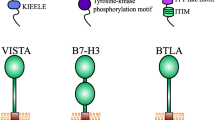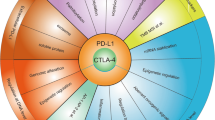Abstract
It has been shown that protein tyrosine phosphatase non-receptor type (PTPN) 3 inhibits T-cell activation. However, there is no definitive conclusion about how the inhibition of PTPN3 in lymphocytes affects immune functions in human lymphocytes. In the present study, we showed that PTPN3 inhibition significantly contributes to the enhanced activation of activated human lymphocytes. The PTPN3 expression of lymphocytes was significantly increased through the activation process using IL-2 and anti-CD3 mAb. Interestingly, inhibiting the PTPN3 expression in activated lymphocytes significantly augmented the proliferation, migration, and cytotoxicity through the phosphorylation of zeta-chain-associated protein kinase 70 (ZAP-70), lymphocyte-specific protein tyrosine kinase (LCK), and extracellular signal-regulated kinases (ERK). Lymphocyte activation by PTPN3 inhibition was observed only in activated CD3+ T cells and not in NK cells or resting T cells. In therapy experiments using autologous tumors and lymphocytes, PTPN3 inhibition significantly augmented the number of tumor-infiltrated lymphocytes and the cytotoxicity of activated lymphocytes. Our results strongly imply that PTPN3 acts as an immune checkpoint in activated lymphocytes and that PTPN3 inhibitor may be a new non-antibody-type immune checkpoint inhibitor for cancer therapy.





Similar content being viewed by others
Abbreviations
- DALs:
-
DC-stimulated activated lymphocytes
- ERK:
-
Extracellular signal-regulated kinases
- GAPDH:
-
Glyceraldehyde-3-phosphate dehydrogenase
- LCK:
-
Lymphocyte-specific protein tyrosine kinase
- MOI:
-
Multiplicity of infection
- ntTILs:
-
Non-tumor-tissue-infiltrating-administrated lymphocytes
- PTP:
-
Protein tyrosine phosphatase
- PTPN:
-
Protein tyrosine phosphatase non-receptor type
- shRNA:
-
Short hairpin RNA
- Zap-70:
-
Zeta-chain-associated protein kinase 70
References
Borqhaei H, Paz-Ares L, Horn L, Spigel DR, Steins M, Ready NE, Chow LQ, Vokes EE, Felip E, Holgado E, Barlesi F, Kohlhäufl M, Arrieta O, Burgio MA, Fayette J, Lena H, Poddubskaya E, Gerber DE, Gettinger SN, Rudin CM, Rizvi N, Crinò L, Blumenschein GR Jr, Antonia SJ, Dorange C, Harbison CT, Graf Finckenstein F, Brahmer JR (2015) Nivolumab versus docetaxel in advanced nonsquamous non-small-cell lung cancer. N Engl J Med 373:1627–1639
Motzer RJ, Escudier B, McDermott DF, George S, Hammers HJ, Srinivas S, Tykodi SS, Sosman JA, Procopio G, Plimack ER, Castellano D, Choueiri TK, Gurney H, Donskov F, Bono P, Wagstaff J, Gauler TC, Ueda T, Tomita Y, Schutz FA, Kollmannsberger C, Larkin J, Ravaud A, Simon JS, Xu LA, Waxman IM, Sharma P (2015) Nivolumab versus everolimus in advanced renal-cell carcinoma. N Engl J Med 373:1803–1813
Blank CU, Rozeman EA, Fanchi LF, Sikorska K, van de Wiel B, Kvistborg P, Krijgsman O, van den Braber M, Philips D, Broeks A, van Thienen JV, Mallo HA, Adriaansz S, Ter Meulen S, Pronk LM, Grijpink-Ongering LG, Bruining A, Gittelman RM, Warren S, van Tinteren H, Peeper DS, Haanen JBAG, van Akkooi ACJ, Schumacher TN (2018) Neoadjuvant versus adjuvant ipilimumab plus nivolumab in macroscopic stage III melanoma. Nat Med. https://doi.org/10.1038/s41591-018-0198-0
Marcq E, Waele J, Audenaerde JV, Lion E, Santermans E, Hens N, Pauwels P, van Meerbeeck JP, Smits ELJ (2017) Abundant expression of TIM-3, LAG-3, PD-1 and PD-L1 as immunotherapy checkpoint targets in effusions of mesothelioma patients. Oncotarget 8:88904–88917
Han S, Williams S, Mustelin T (2000) Cytoskeletal protein tyrosine phosphatase PTPH1 reduces T cell antigen receptor signaling. Eur J Immunol 30:1318–1325
Bauler TJ, Hendriks WJ, King PD (2008) The FERM and PDZ domain-containing protein tyrosine phosphatases, PTPN4 and PTPN3, are both dispensable for T cell receptor signal transduction. PLoS One 3:e4014
Onishi H, Koya N, Kiyota A, Tanaka H, Umebayashi M, Katano M, Morisaki T (2012) A new method for rapid cytotoxic T-lymphocyte induction using a multiple cytokine cocktail. Anticancer Res 32:2385–2390
Miyahara E, Nishikawa T, Takeuchi T, Yasuda K, Okamoto Y, Kawano Y, Horiuchi M (2014) Effect of myeloperoxidase inhibition on gene expression profiles in HL-60 cells exposed to 1, 2, 4,-benzenetriol. Toxicology 317:50–57
Ogino T, Onishi H, Suzuki H, Morisaki T, Tanaka M, Katano M (2012) Inclusive estimation of complex antigen presentation functions of monocyte-derived dendritic cells differentiated under normoxia and hypoxia conditions. Cancer Immunol Immunother 61:409–424
Suyama K, Onishi H, Imaizumi A, Shinkai K, Umebayashi M, Kubo M, Mizuuchi Y, Oda Y, Tanaka M, Nakamura M, Katano M (2016) CD24 suppresses malignant phenotype by downregulation of SHH transcription through STAT1 inhibition in breast cancer cells. Cancer Lett 374:44–53
Onishi H, Morisaki T, Kiyota A, Koya N, Tanaka H, Umebayashi M, Katano M (2013) The Hedgehog inhibitor cyclopamine impairs the benefits of immunotherapy with activated T and NK lymphocytes derived from patients with advanced cancer. Cancer Immunol Immunother 62:1029–1039
Bauler TJ, Hughes ED, Arimura Y, Mustelin T, Saunders TL, King PD (2007) Normal TCR signal transduction in mice that lack catalytically active PTPN3 protein tyrosine phosphatase. J Immunol 178:3680–3687
Gavrieli M, Watanabe N, Loftin SK, Murphy TL, Murphy KM (2003) Characterization of phosphotyrosine binding motifs in the cytoplasmic domain of B and T lymphocyte attenuator required for association with protein tyrosine phosphatase SHP-1 and SHP-2. Biochem Biophys Res Commun 312:1236–1243
Okazaki T, Chikuma S, Iwai Y, Fagarasan S, Honjo T (2013) A rheostat for immune responses: the unique properties of PD-1 and their advantages for clinical application. Nat Immunol 14:1212–1218
Chen YN, LaMarche MJ, Chan HM, Fekkes P, Garcia-Fortanet J, Acker MG, Antonakos B, Chen CH, Chen Z, Cooke VG, Dobson JR, Deng Z, Fei F, Firestone B, Fodor M, Fridrich C, Gao H, Grunenfelder D, Hao HX, Jacob J, Ho S, Hsiao K, Kang ZB, Karki R, Kato M, Larrow J, La Bonte LR, Lenoir F, Liu G, Liu S, Majumdar D, Meyer MJ, Palermo M, Perez L, Pu M, Price E, Quinn C, Shakya S, Shultz MD, Slisz J, Venkatesan K, Wang P, Warmuth M, Williams S, Yang G, Yuan J, Zhang JH, Zhu P, Ramsey T, Keen NJ, Sellers WR, Stams T, Fortin PD (2016) Allosteric inhibition of SHP2 phosphatase inhibits cancers driven by receptor tyrosine kinases. Nature 535:148–152
Brownlie RJ, Miosge LA, Vassilakos D, Svensson LM, Cope A, Zamoyska R (2012) Lack of the phosphatase PTPN22 increases adhesion of murine regulatory T cells to improve their immunosuppressive function. Sci Signal 5:ra87
Salmond RJ, Brownlie RJ, Zamoyska R (2015) Multifunctional roles of the autoimmune disease-associated tyrosine phosphatase PTPN22 in regulating T cell homeostasis. Cell Cycle 14:705–711
Gao Q, Zhao YJ, Wang XY, Guo WJ, Gao S, Wei L, Shi JY, Shi GM, Wang ZC, Zhang YN, Shi YH, Ding J, Ding ZB, Ke AW, Dai Z, Wu FZ, Wang H, Qiu ZP, Chen ZA, Zhang ZF, Qiu SJ, Zhou J, He XH, Fan J (2014) Activating mutations in PTPN3 promote cholangiocarcinoma cell proliferation and migration and are associated with tumor recurrence in patients. Gastroenterology 146:1397–1407
Li MY, Lai PL, Chou YT, Chi AP, Mi YZ, Khoo KH, Chang GD, Wu CW, Meng TC, Chen GC (2015) Protein tyrosine phosphatase PTPN3 inhibits lung cancer cell proliferation and migration by promoting EGFR endocytic degradation. Oncogene 34:3791–3803
Li S, Cao J, Zhang W, Zhang F, Ni G, Luo Q, Wang M, Tao X, **a H (2016) Protein tyrosine phosphatase PTPN3 promotes drug resistance and stem cell-like characteristics in ovarian cancer. Sci Rep 6:36873
Acknowledgements
We thank Ms. Emi Onishi for skillful technical assistance.
Funding
This study was supported by the Japan Society for the Promotion of Science KAKENHI Grant Numbers JP15K10055, JP17H04283, and JP18K08682.
Author information
Authors and Affiliations
Contributions
AF was involved in the analysis of all experiments. KN, AI, and MK were involved in the gene transfection. YO and SI were involved in the interpretation of data. MU and NK were involved in the acquisition and analysis of data. TM, TN, and HO were involved in the design of the work.
Corresponding author
Ethics declarations
Conflict of interest
The authors declare that they have no conflicts of interest.
Ethical approval and ethical standards
All procedures performed in studies involving human participants were in accordance with the ethical standards of the Kyushu University Ethics Committee (study approval numbers 29-251 and 28-277) and with the 1964 Helsinki declaration and its later amendments or comparable ethical standards. All procedures performed in studies involving animals were in accordance with the ethical standards of the Animal Care and Use Committee of Kyushu University (study approval numbers A29-376-0 and A29-333-0).
Informed consent
Written informed consent was obtained from all participants included in the study to the use of their PBMC and tumor specimen for research and for publication before blood collection.
Animal source
All mice were obtained from Charles River Laboratories Japan, Yokohama, Japan.
Cell line authentication
SUIT-2 is a human pancreatic ductal adenocarcinoma cell line, and SCC-9 is a human tongue squamous cell carcinoma cell line. Both cell lines were purchased from American Type Culture Collection (ATCC) previously and were stored in liquid nitrogen. All cell lines were cultured for no more than 2–3 weeks after thawing, routinely checked for mycoplasma infection while cultured, and showed consistent phenotypes by microscopy prior to in vitro and in vivo experiments.
Additional information
Publisher's Note
Springer Nature remains neutral with regard to jurisdictional claims in published maps and institutional affiliations.
Electronic supplementary material
Below is the link to the electronic supplementary material.
Rights and permissions
About this article
Cite this article
Fujimura, A., Nakayama, K., Imaizumi, A. et al. PTPN3 expressed in activated T lymphocytes is a candidate for a non-antibody-type immune checkpoint inhibitor. Cancer Immunol Immunother 68, 1649–1660 (2019). https://doi.org/10.1007/s00262-019-02403-y
Received:
Accepted:
Published:
Issue Date:
DOI: https://doi.org/10.1007/s00262-019-02403-y




